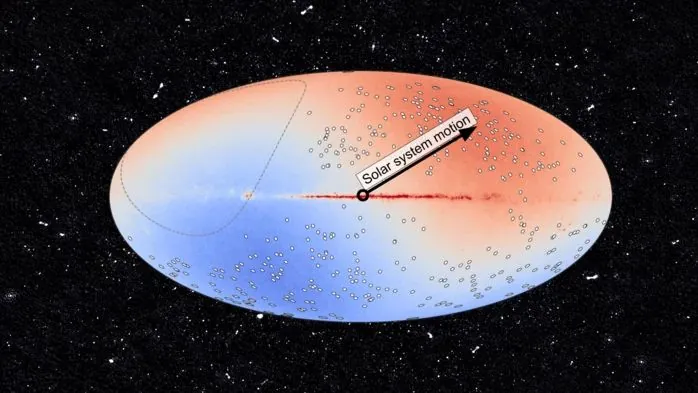
Stunning Cosmic Discovery: How a Groundbreaking Radio Survey is Unraveling the Universe's Mysteries
2024-09-23
Author: John Tan
When we gaze at the night sky, our vision captures only a fraction of the universe's true expanse. While our eyes can detect visible light, a vast array of electromagnetic radiation remains undetected, hidden in the depths of the cosmos. This is where sophisticated telescopes come into play, allowing astronomers to decode the universe’s secrets across various wavelengths.
One such powerful tool is the South African MeerKAT radio telescope, renowned for its ability to capture the low-frequency emissions from celestial objects like stars, black holes, and distant galaxies. Recently, an international team of astronomers embarked on an ambitious project known as the MeerKAT Absorption Line Survey (MALS), harnessing a colossal database of radio sources to investigate a phenomenon termed the "cosmic radio dipole".
This innovative survey opens a window into the large-scale architecture of our universe, as radio emissions from galaxies traverse the cosmic landscape largely unobstructed. MALS has generated a remarkable catalog containing nearly a million radio sources by systematically scanning the sky in 391 different directions.
Neeraj Gupta, an astronomer at the Inter-University Centre for Astronomy and Astrophysics (IUCAA) and the project leader, emphasized the catalog’s significance. "The depth and diversity of this continuum catalog positions it uniquely among modern radio continuum surveys," he noted.
The cosmic radio dipole effect arises from the solar system's movement through space as it orbits the Milky Way galaxy and interacts with neighboring galaxies. This motion creates an observable disparity in the density of radio sources—more visible in the direction we are advancing and fewer behind us. Surprisingly, initial measurements suggested the discrepancy was larger than expected.
This anomaly led astronomers to ponder whether the cosmic radio dipole might arise from an accumulation of galaxies along our trajectory rather than just the solar system's motion. However, the latest findings from the MALS survey align with predictions derived from the current understanding of our solar system's movement.
The discrepancy's root may lie in the methodologies employed in previous surveys. Whereas MALS focused on narrower sky segments with deeper sensitivity, other surveys typically encompassed broader areas but at shallower depths, complicating the comparison.
Jonah Wagenveld, an astronomer at MPIfR and lead author of the study, asserted, "Measuring the dipole is crucial for testing our cosmological theories and validating our understanding of the universe's structure."
These groundbreaking results underscore the transformative power of radio astronomy in broadening our knowledge of the cosmos on the grandest scales. With every new observation, astronomers are closer to validating existing theories and discovering the hidden truths about our universe—thrilling prospects that may one day revolutionize our comprehension of existence itself.


 Brasil (PT)
Brasil (PT)
 Canada (EN)
Canada (EN)
 Chile (ES)
Chile (ES)
 Česko (CS)
Česko (CS)
 대한민국 (KO)
대한민국 (KO)
 España (ES)
España (ES)
 France (FR)
France (FR)
 Hong Kong (EN)
Hong Kong (EN)
 Italia (IT)
Italia (IT)
 日本 (JA)
日本 (JA)
 Magyarország (HU)
Magyarország (HU)
 Norge (NO)
Norge (NO)
 Polska (PL)
Polska (PL)
 Schweiz (DE)
Schweiz (DE)
 Singapore (EN)
Singapore (EN)
 Sverige (SV)
Sverige (SV)
 Suomi (FI)
Suomi (FI)
 Türkiye (TR)
Türkiye (TR)
 الإمارات العربية المتحدة (AR)
الإمارات العربية المتحدة (AR)